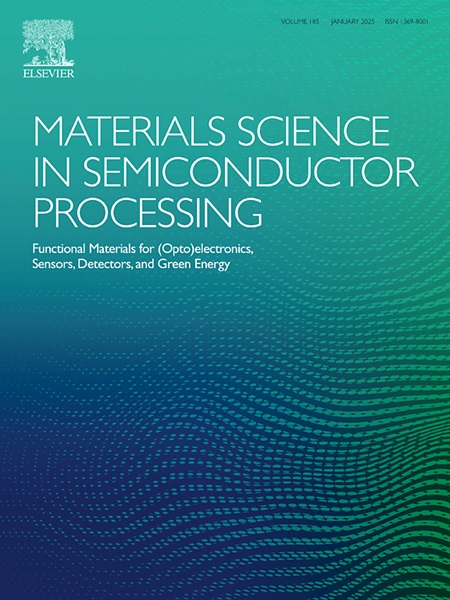Ab initio carrier mobility and polar phonon scattering in XAs(X=B, Al, Ga)
IF 4.6
3区 工程技术
Q2 ENGINEERING, ELECTRICAL & ELECTRONIC
引用次数: 0
Abstract
In polar semiconductors, long-range electron–phonon interactions and polar phonon scattering are key challenges affecting first-principles calculations of carrier transport properties. This paper systematically studies the limiting effect of phonons on carrier transport properties in cubic III–V compounds (BAs, AlAs, and GaAs) using first-principles calculations. To describe this effect more accurately, we introduce a polarity correction, which significantly enhances the accuracy of the charge transport characteristics calculation for XAs (X=B, Al, Ga). The results show that high-frequency optical phonon scattering is the primary factor limiting charge transport performance at low temperatures. Additionally, we analyze the contributions of different phonon modes to carrier scattering and highlight their specific roles in the transport process. Our findings further reveal that BAs exhibits both high electron and hole mobility at 300 K, whereas AlAs shows low electron and hole mobility, which is extremely rare among III–V semiconductors. Our study enhances and refines the understanding of III–V semiconductor properties and provides new insights for long-term research aimed at improving semiconductor material performance.
从头算XAs(X=B, Al, Ga)中的载流子迁移率和极性声子散射
在极性半导体中,远程电子-声子相互作用和极性声子散射是影响载流子输运性质第一性原理计算的关键挑战。本文利用第一性原理计算系统地研究了声子对立方III-V化合物(BAs, AlAs和GaAs)中载流子输运特性的限制效应。为了更准确地描述这种效应,我们引入了极性校正,这大大提高了XAs (X=B, Al, Ga)电荷输运特性计算的准确性。结果表明,高频光学声子散射是限制低温下电荷输运性能的主要因素。此外,我们分析了不同声子模式对载流子散射的贡献,并强调了它们在输运过程中的具体作用。我们的研究结果进一步表明,在300 K时,BAs具有较高的电子和空穴迁移率,而AlAs具有较低的电子和空穴迁移率,这在III-V半导体中是极为罕见的。我们的研究增强和完善了对III-V半导体特性的理解,并为旨在提高半导体材料性能的长期研究提供了新的见解。
本文章由计算机程序翻译,如有差异,请以英文原文为准。
求助全文
约1分钟内获得全文
求助全文
来源期刊

Materials Science in Semiconductor Processing
工程技术-材料科学:综合
CiteScore
8.00
自引率
4.90%
发文量
780
审稿时长
42 days
期刊介绍:
Materials Science in Semiconductor Processing provides a unique forum for the discussion of novel processing, applications and theoretical studies of functional materials and devices for (opto)electronics, sensors, detectors, biotechnology and green energy.
Each issue will aim to provide a snapshot of current insights, new achievements, breakthroughs and future trends in such diverse fields as microelectronics, energy conversion and storage, communications, biotechnology, (photo)catalysis, nano- and thin-film technology, hybrid and composite materials, chemical processing, vapor-phase deposition, device fabrication, and modelling, which are the backbone of advanced semiconductor processing and applications.
Coverage will include: advanced lithography for submicron devices; etching and related topics; ion implantation; damage evolution and related issues; plasma and thermal CVD; rapid thermal processing; advanced metallization and interconnect schemes; thin dielectric layers, oxidation; sol-gel processing; chemical bath and (electro)chemical deposition; compound semiconductor processing; new non-oxide materials and their applications; (macro)molecular and hybrid materials; molecular dynamics, ab-initio methods, Monte Carlo, etc.; new materials and processes for discrete and integrated circuits; magnetic materials and spintronics; heterostructures and quantum devices; engineering of the electrical and optical properties of semiconductors; crystal growth mechanisms; reliability, defect density, intrinsic impurities and defects.
 求助内容:
求助内容: 应助结果提醒方式:
应助结果提醒方式:


